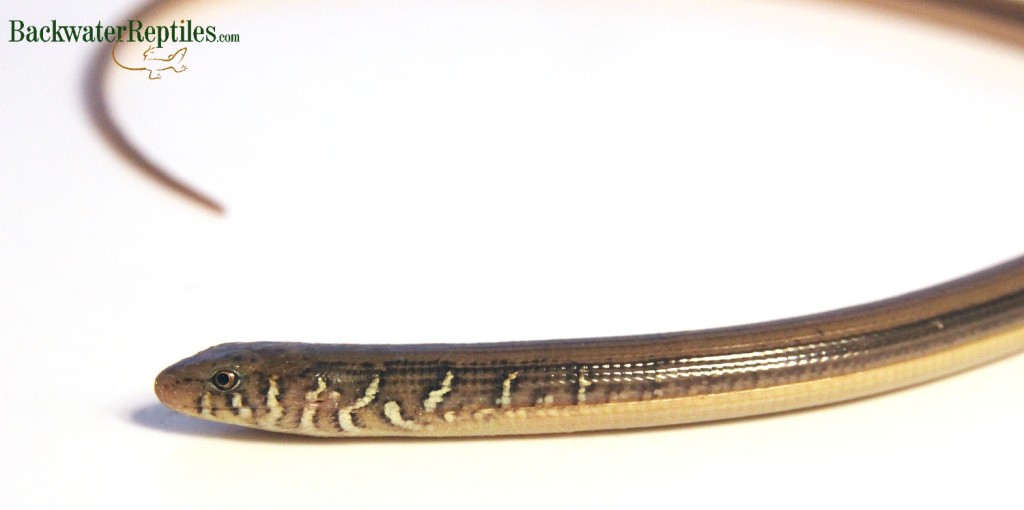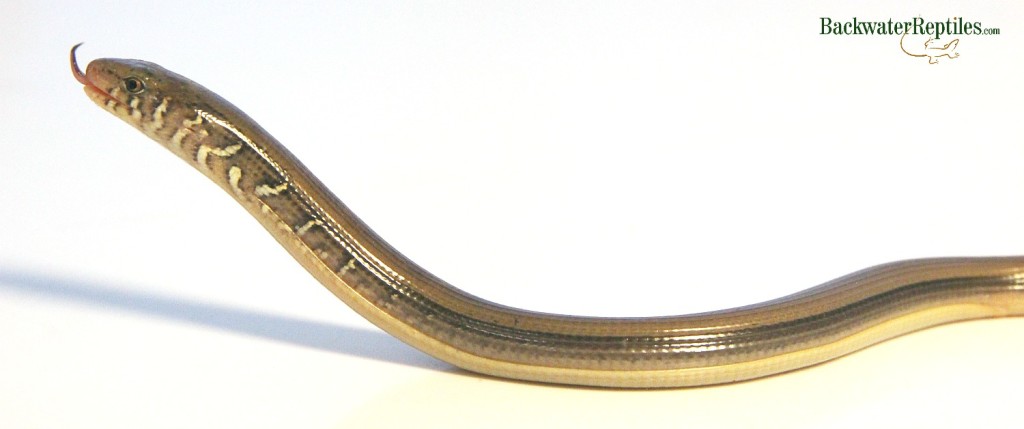What comes to mind when you hear the words legless lizard? For a great number of people, the answer is a snake. Logically, a lizard without legs that slithers as a means of locomotion would be classified as a snake, right? Not the case!
What’s the Difference Between Snakes & Legless Lizards?
In this article, we’ll address these questions:
-What exactly is a legless lizard?
-What makes a legless lizard different from a snake?
-Do legless lizards make good pets?
The Difference Between Snakes and Legless Lizards
What is a legless lizard?
Also commonly known as glass lizards, legless lizards are any number of lizards from the family Pygopodidae that have either completely lost their limbs or have reduced them in size to the point that they are no longer useful in locomotion.

As you might surmise, legless lizards closely resemble snakes in terms of appearance. They come in many color schemes and can be found in various climates.
What makes a legless lizard different from a snake?
First of all, observant people who are not afraid to get up close and personal with reptiles will be able to see physical differences between legless lizards and snakes.
Legless lizards have eyelids and can blink, whereas snakes lack eyelids and therefore cannot blink. Although we’ve never tried it, we’re sure that if you stared at a legless lizard long enough, you’d eventually see it blink.
If you turn a snake over and examine its belly, you’ll notice it will have a broad, single row of scales that runs the length of its body. When you take a look at the belly of a legless lizard however, you’ll be able to see that it lacks this feature.
Another physical trait you can observe in a legless lizard is an external ear opening. Snakes actually don’t have ears. They sense sound in a different manner than most animals, so they have no need for external ears.
The last physical trait you can observe that distinguishes legless lizards from snakes is the length of the animal’s body. This might seem silly, but snakes have long bodies with short tails, whereas legless lizards have short bodies with long tails. It might take a bit more practice to recognize where an animal’s tail begins, but combined with all the other visible traits that differentiate legless lizards from snakes, we think even reptile novices will be able to tell the difference between the two.

Lastly, snakes have a jaw that can unhinge to allow for them to consume prey much larger than most animals. A snake can eat something as large or sometimes larger than its head, whereas its unwise to feed a lizard anything larger than the space between its eyes, regardless of whether or not that lizard has legs. Legless lizards do not possess the proper anatomy to be able to unhinge their jaw and therefore eat mostly small invertebrates, whereas snakes generally eat small mammals.
Do legless lizards make good pets?
At Backwater Reptiles, we think every critter we sell would make a good fit for the right type of person.
Glass lizards are sort of just very chill versions of “normal” lizards with legs. We’ve found that some lizard species are naturally more flighty and timid, which means they don’t enjoy being held. They’re prone to skuttling out of your hand or squiggling uncomfortably. Because legless lizards are not the speediest of reptiles, they’re usually just fine to relax in your hands, although they’re not as likely to wind around your wrist or wrap around your fingers as a pet snake would be.

As we’ve previously touched upon, legless lizards are carnivores, so as long as you feed them a varied diet of different invertebrates, your legless lizard will thrive. In the wild, they’ll eat everything from worms to other reptiles’ eggs. At Backwater Reptiles, we feed ours gutloaded crickets, mealworms, night crawlers on occasion, and wax worms as treats.
Conclusion
So, we’ve learned that legless lizards and snakes are definitely not the same. Although they are very similar in appearance, they are very different creatures with different care requirements.
If this discussion has got you thinking you’d enjoy a pet legless lizard of your own, Backwater Reptiles sells them.
